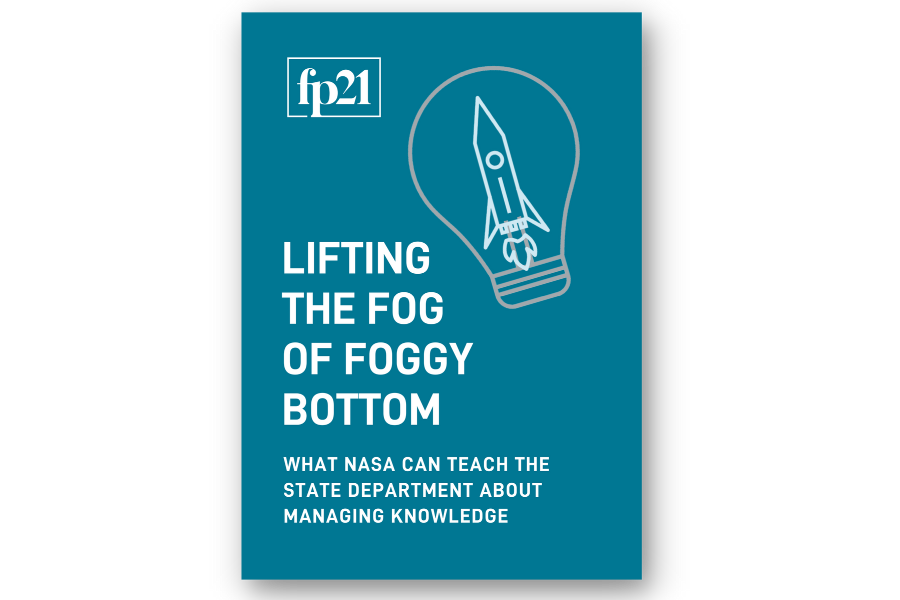Lifting the Fog of Foggy Bottom: What NASA Can Teach the State Department about Managing Knowledge
Image produced by DALL-E
Click here for the full report
Authored by: Beverli DeWalt, Rachel George, Fabio Van Loon, and Dan Spokojny
Officials at the State Department have access to vast amounts of information and data, but the information and knowledge management (KM) structures are outdated, undermining effectiveness. Its knowledge systems have degraded as the volume of information has outpaced legacy processes and systems. Too much of the most useful knowledge fails to reach officials in a timely manner. Key insights may be buried in the avalanche of irrelevant knowledge, forgotten as officials rotate positions, or rendered inaccessible due to stovepiping.
Evidence from industry demonstrates the benefits of improved knowledge management practices are wide-ranging. Research indicates that a robust KM system can reduce information search time by as much as 35 percent and raise organization-wide productivity by 20 to 25 percent.
This report pillar investigates how the State Department identifies, creates, captures, acquires, shares and leverages knowledge. These choices have wide ranging implications for policy effectiveness. And yet, efforts to institutionalize strong and effective KM processes in U.S. foreign policy agencies, including the U.S. State Department, remain nascent.
NASA is a case study in knowledge management reform, having transformed the culture of the organization following the Challenger Shuttle disaster. Today, NASA’s KM program is one of the world’s most studied and respected. It holds powerful lessons for how the State Department can start treating knowledge as its most important strategic resource.



